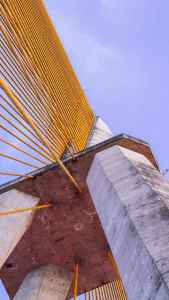Rachel Cusk’s “Parade”: A High-Wire Act of Abstraction
Rachel Cusk—she’s like that friend who always tells the most intriguing, albeit slightly confusing, stories at parties. With her twelfth novel, “Parade,” Cusk continues her literary high-wire act, pushing the boundaries of conventional storytelling and diving headfirst into a pool of abstract narratives. This time, she’s grappling with themes of freedom, gender, the joys and toils of domesticity, the ever-elusive nature of art, and, of course, the human capacity for suffering. Buckle up, folks, it’s gonna be a bumpy ride.
Now, don’t get me wrong, I’m all for a little literary adventure. But while “Parade” shares some DNA with Cusk’s previous works like “Outline” and “Second Place”, it often feels like she’s traded in her storytelling compass for a map drawn on a particularly wobbly napkin. This analysis is going to argue that the novel’s abstract structure and “Where’s Waldo?” approach to character development, while undoubtedly ambitious, make it a bit of a tough cookie to swallow, ultimately hindering its impact.
From Grounded Narratives to Abstract Mazes
One of the most jarring things about “Parade” is its departure from the more traditional narrative structures found in Cusk’s earlier works. Remember the clear, relatable protagonists and storylines of “Outline” and “Second Place”? Yeah, throw those out the window. “Parade” is like a jigsaw puzzle with half the pieces missing—intentionally, I might add. There’s no central narrative thread to cling to, no character to really root for. It’s just… vibes.
And listen, I get it, ambiguity can be cool. But in “Parade,” it often feels like Cusk is deliberately trying to disorient the reader, leaving us feeling more like lost tourists than engaged participants in the narrative. This lack of a grounding perspective makes it incredibly difficult to emotionally connect with the story or its characters, which, let’s be real, is kinda important when you’re trying to tell a compelling story.
A Parade of Ambiguity: Structure and Style
So, how exactly does this whole abstract structure thing play out? Well, imagine “Parade” as a four-part theatrical production, each section titled with an intriguing, if slightly ominous, moniker: “The Stuntman,” “The Midwife,” “The Diver,” and “The Spy.” Each section introduces us to a new artist, all conveniently identified as “G.” It’s like Cusk is playing a literary game of “Guess Who?” with her characters. Are these different “Gs” connected? Are they all just fragments of a single, unknowable being? Who knows! (Besides Cusk, hopefully.)
This whole “G” thing, combined with Cusk’s penchant for switching between first and third-person narration like a literary DJ, creates a disorienting and, dare I say, pretentious tone. It’s like she’s more concerned with showing off her stylistic acrobatics than actually telling a story that resonates with the reader.
Delving into the Abstract: A Section-by-Section Breakdown
Okay, so we’ve established that “Parade” is about as straightforward as a maze designed by a surrealist painter. But let’s break down each section to see what we’re actually dealing with, shall we?
“The Stuntman”: Artistic Inversion and the Female Experience
The curtain rises on “The Stuntman,” introducing us to our first “G,” a painter who, in a move that would make Picasso scratch his head, creates his masterpieces upside down. This act of artistic inversion becomes a recurring motif throughout the novel, reflecting Cusk’s own penchant for turning traditional narratives on their heads. “The Stuntman” grapples with the complex relationship between artistic innovation, critical reception (because what’s art without a healthy dose of pretentious gallery chatter?), and the often-messy process of personal evolution. Sound familiar? It should, because Cusk herself has navigated these very waters throughout her career.
Beyond the art world shenanigans, “The Stuntman” introduces a recurring theme that weaves its way through “Parade”: the idea of the “stuntman” as a metaphor for female characters navigating the treacherous tightrope of societal expectations and artistic expression. Cusk seems to suggest that women in creative fields often find themselves performing daring feats, defying gravity and convention, just to be seen and heard. Deep, right?
“The Midwife”: Fairy Tales and Domestic Traps
Hold onto your hats, folks, because “The Midwife” takes a darker turn, plunging us into a world that feels like a Grimm’s fairy tale gone wrong. We meet another female artist (you guessed it, another “G”), this time trapped in a suffocating marriage that stifles her creativity like a too-tight corset. Cusk masterfully paints a picture of domesticity as a gilded cage, where societal expectations of women as wives and mothers clash with the fiery demands of artistic ambition.
“The Diver”: Art, Morality, and the Price of Creation
“The Diver” brings us back to the world of “The Stuntman,” revisiting the female sculptor “G” and the aftermath of a shocking event at her exhibition: a suicide. Talk about a buzzkill. This section unfolds primarily through dialogue, reminiscent of a French New Wave film, and grapples with the thorny relationship between art, morality, and the messy personal lives of artists. Is art meant to be morally sound? Or can true creation only emerge from the murky depths of human experience, flaws and all?
“The Spy”: A Male Perspective and the Search for Anonymity
Just when you thought you had a handle on things, “Parade” throws a curveball with “The Spy.” This section deviates from the previous three by focusing on a male filmmaker (yes, another “G” – originality isn’t Cusk’s strong suit here) who seeks anonymity and creative freedom by adopting a pseudonym. Think Banksy, but with less street art and more existential angst. “The Spy” delves into themes of detachment, the complexities of familial relationships (because even brooding artists have families), and the universal human yearning for identity in a world that often feels like a hall of mirrors.
Ambition Versus Accessibility: Cusk’s Artistic Tightrope Walk
So, what’s Cusk really trying to achieve with this fragmented, abstract narrative? Well, in true artist fashion, she’s stated that she aims for a “truthful representation of reality” through a lens of distance and detachment. She cites Italian writer Natalia Ginzburg as a major influence, known for her spare prose and emotionally resonant observations on everyday life.
However, “Parade” takes this minimalist approach to an extreme, often sacrificing reader engagement and emotional resonance in the process. It’s like Cusk is so busy constructing her intricate narrative puzzle box that she forgets to put anything meaningful inside. The novel’s deliberate obfuscation and lack of a clear emotional core ultimately hinder its effectiveness in conveying its themes, leaving the reader feeling more like a spectator than a participant in the story. And let’s be real, nobody likes a story they can’t connect with.
Concluding Thoughts: A Parade That Misses the Mark
“Parade,” with its enigmatic title and equally enigmatic content, serves as a testament to Rachel Cusk’s ongoing exploration of unconventional narratives. She bravely ventures into the uncharted territories of abstract storytelling, pushing the boundaries of what we’ve come to expect from contemporary literature. However, while Cusk’s ambition is admirable, her execution in “Parade” leaves much to be desired. The novel’s lack of a central narrative thread, coupled with its deliberately ambiguous characters and ever-shifting narrative perspectives, results in a disorienting and ultimately alienating reading experience. While Cusk’s previous works like “Outline” and “Second Place” successfully navigated the tightrope between experimentation and accessibility, “Parade” stumbles and falters, leaving the reader feeling lost and unfulfilled. Like an actual parade, it’s visually striking and thought-provoking, but ultimately fleeting and lacking in substance.








